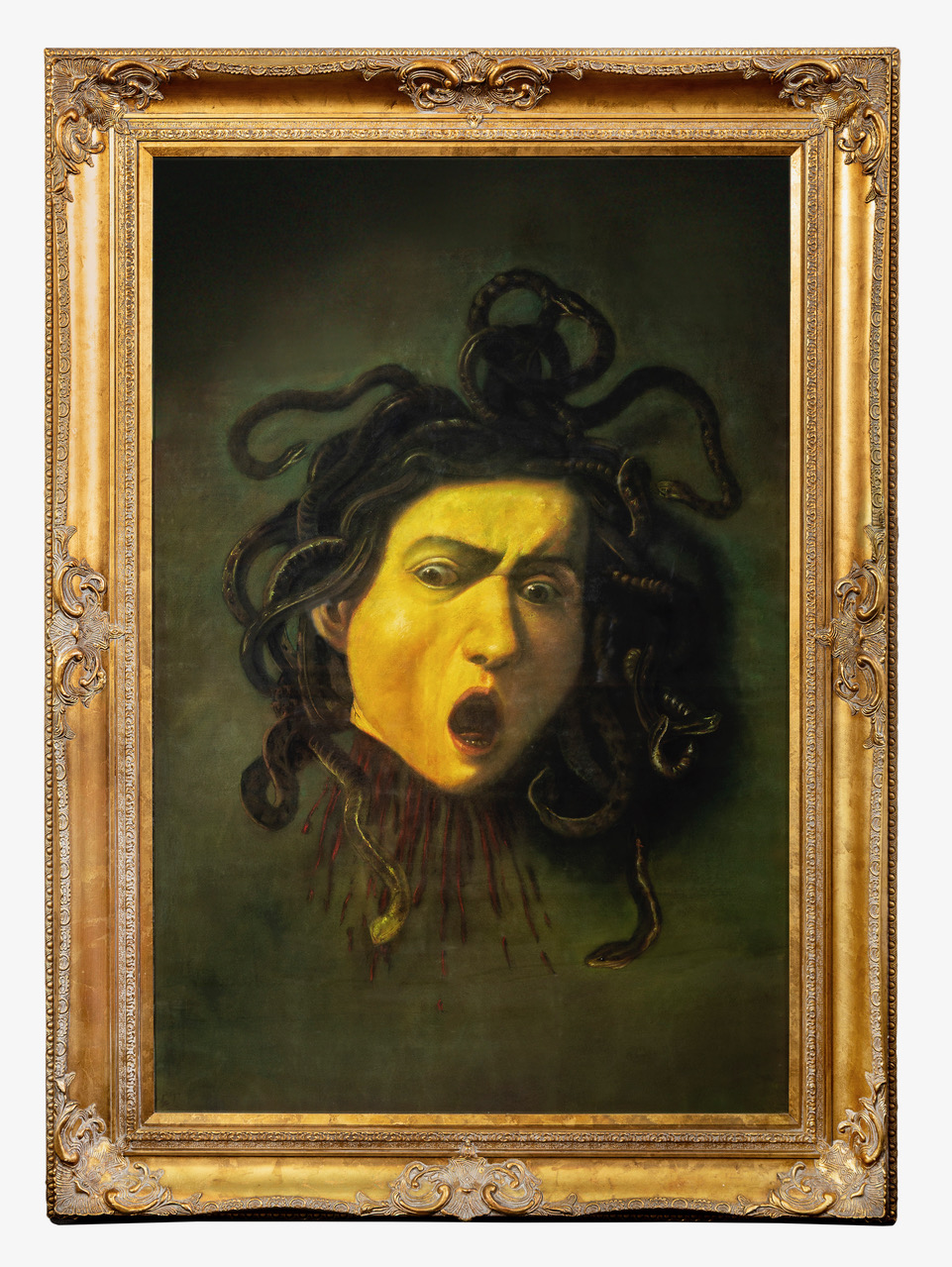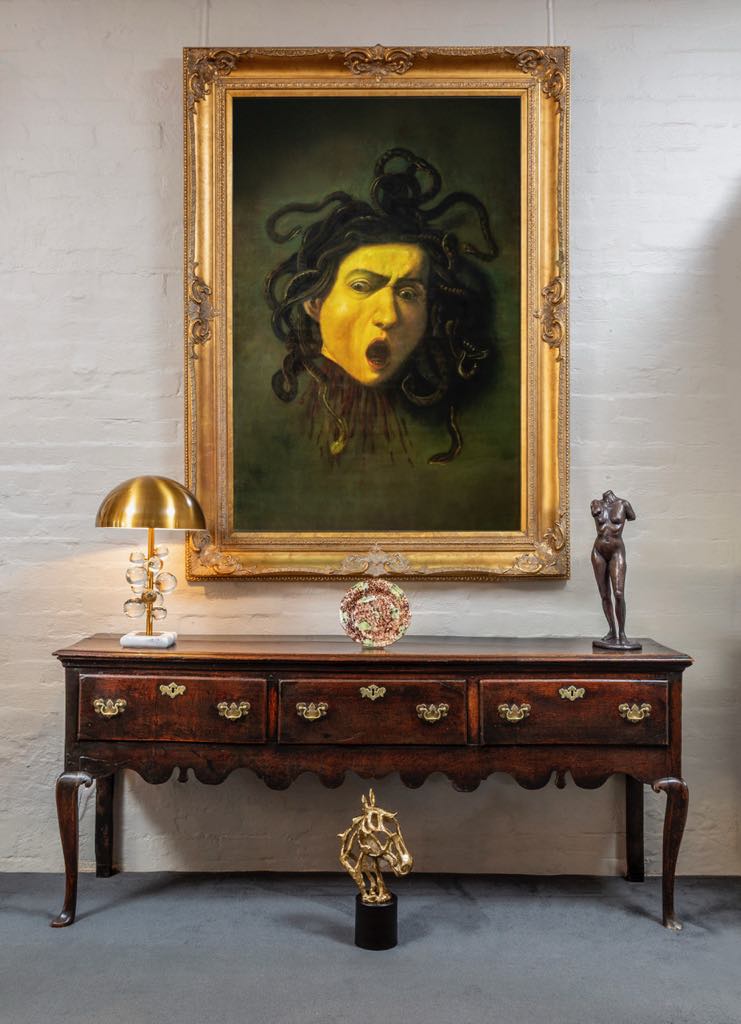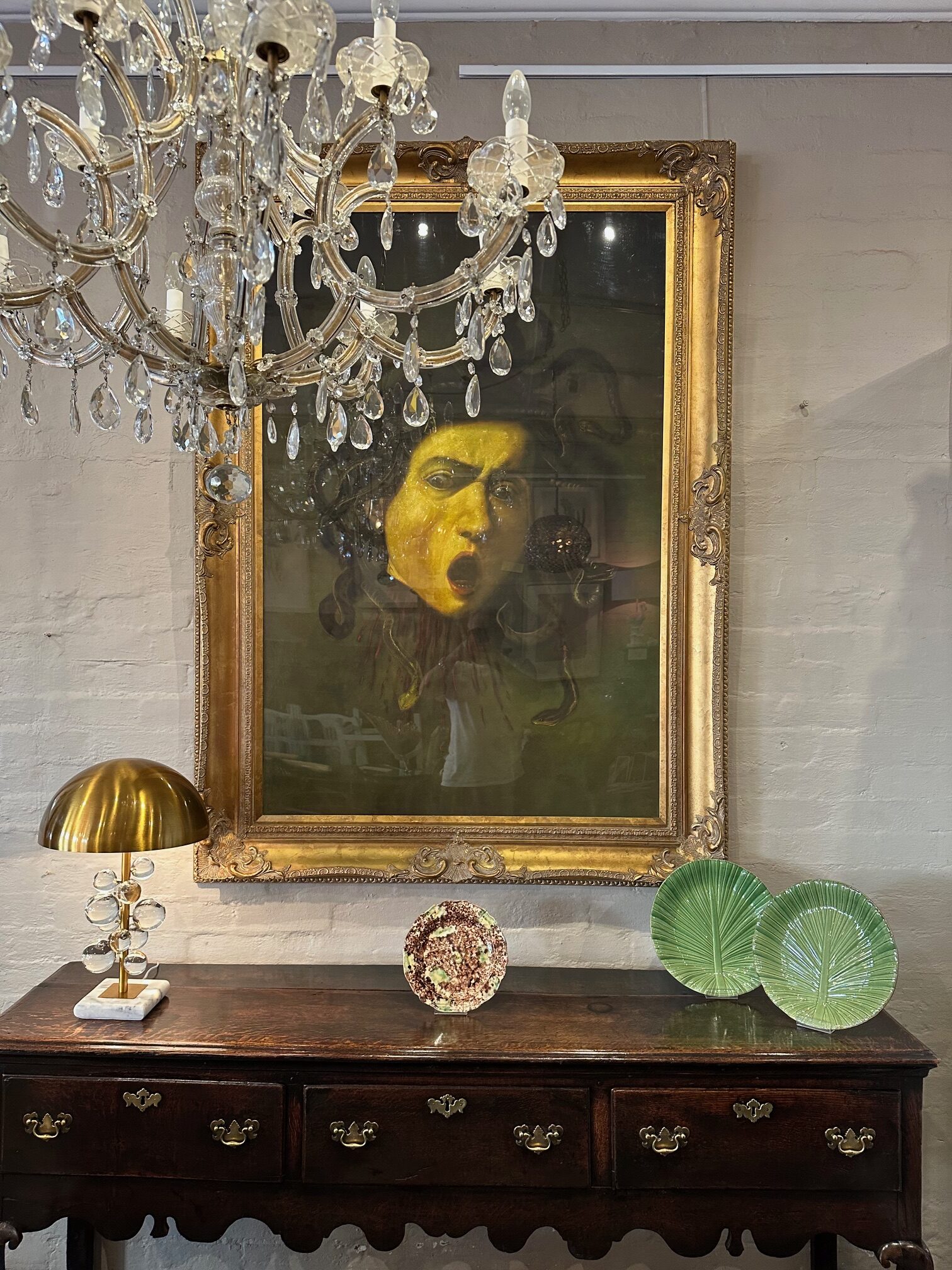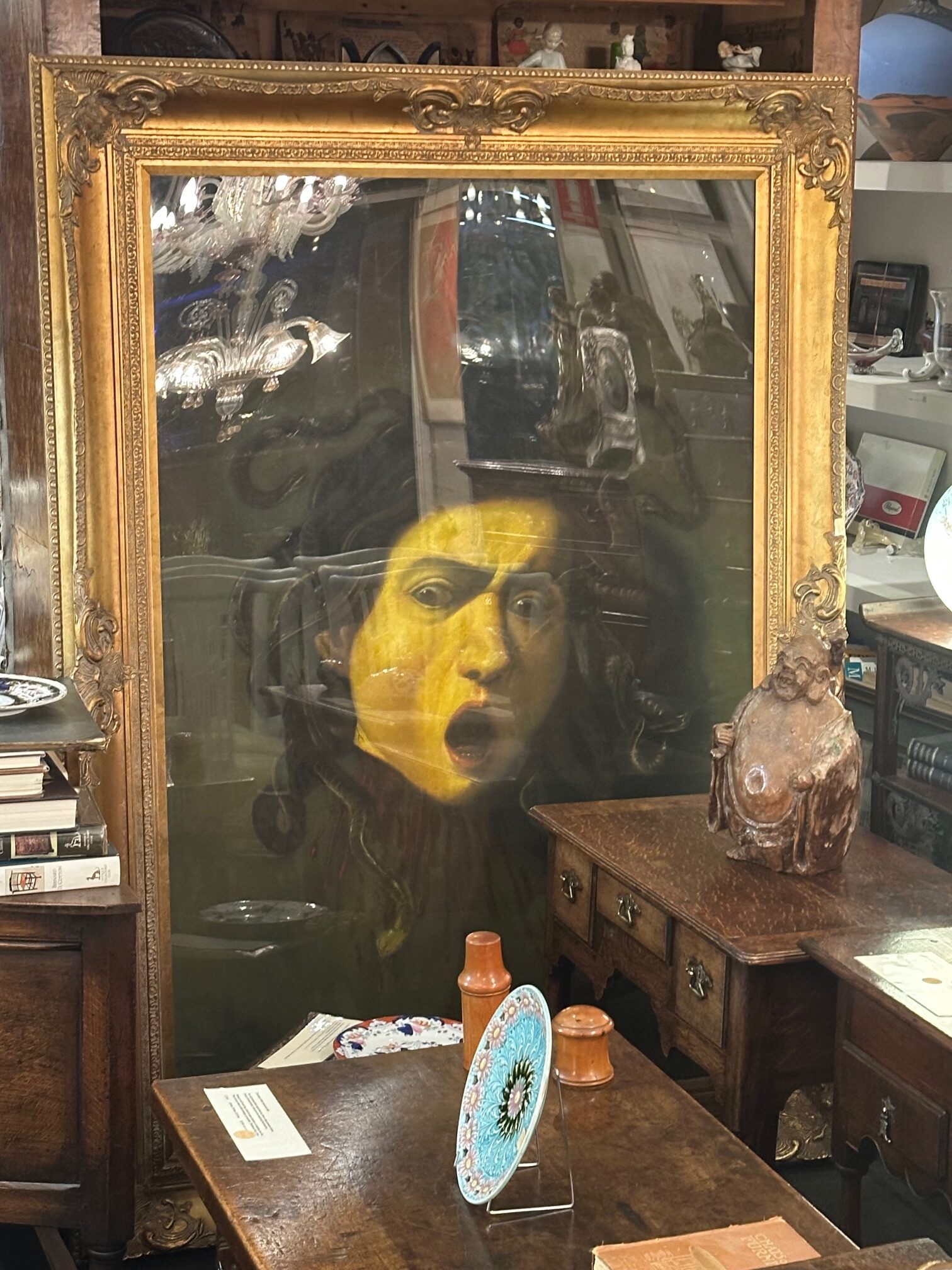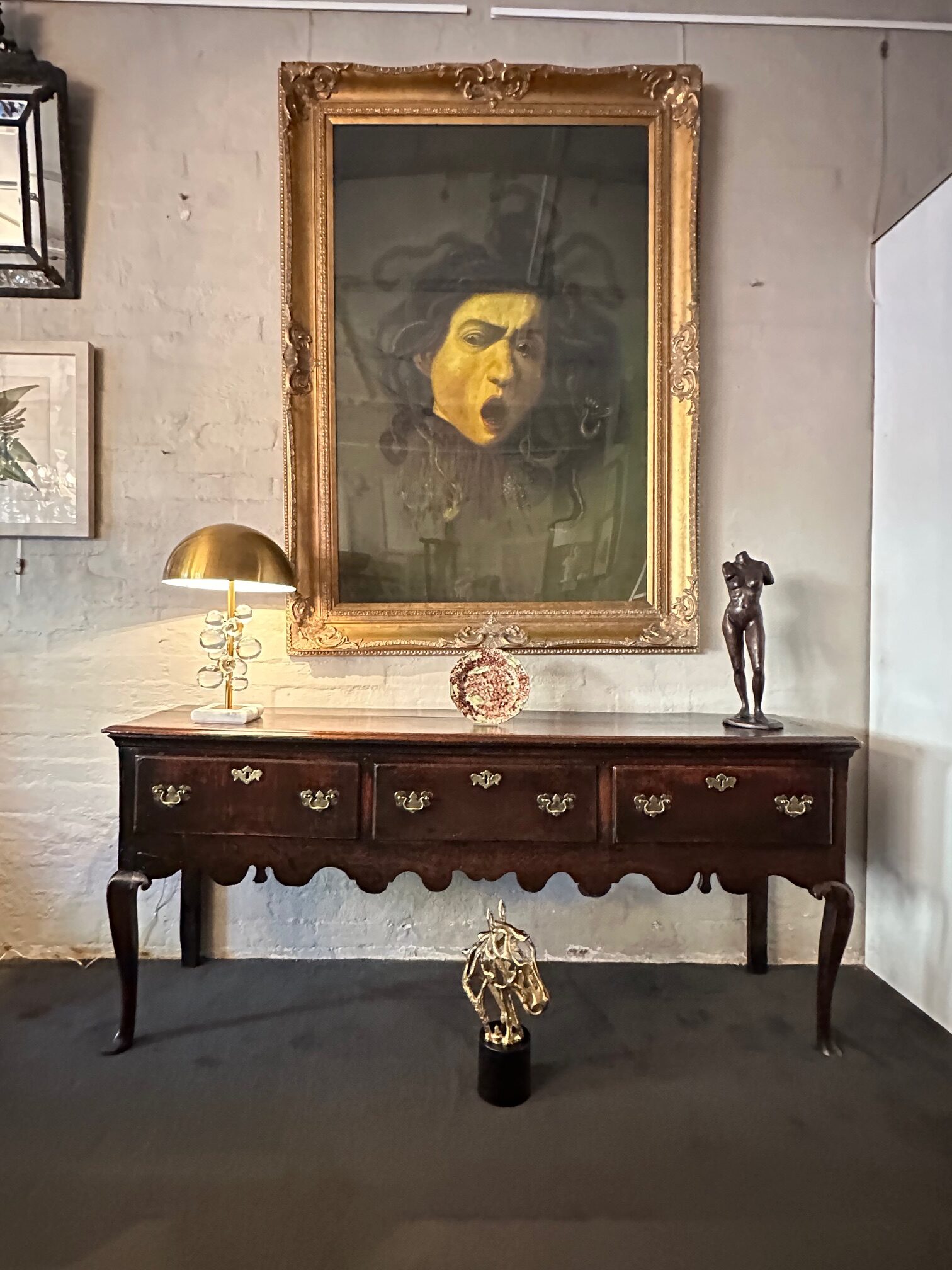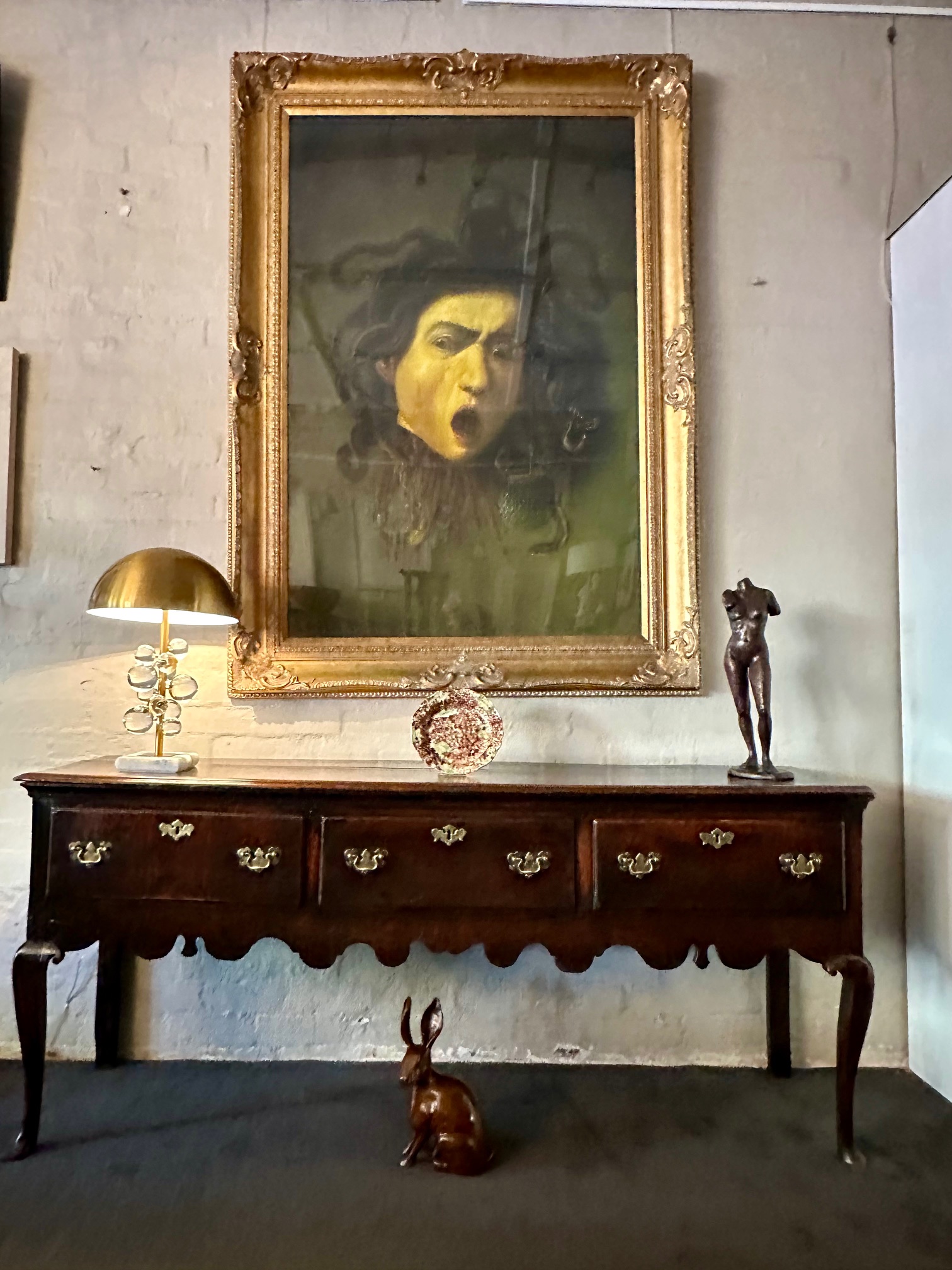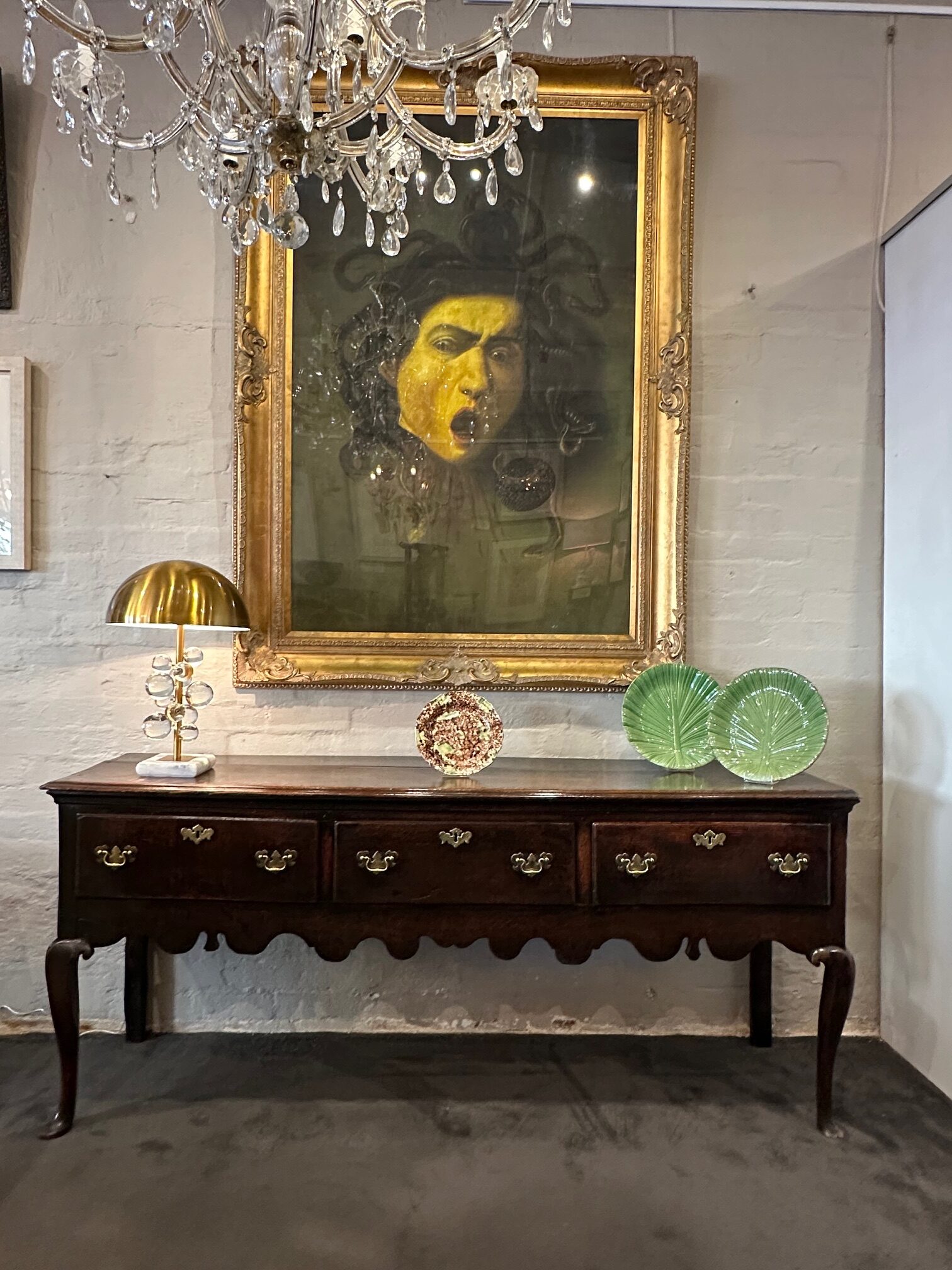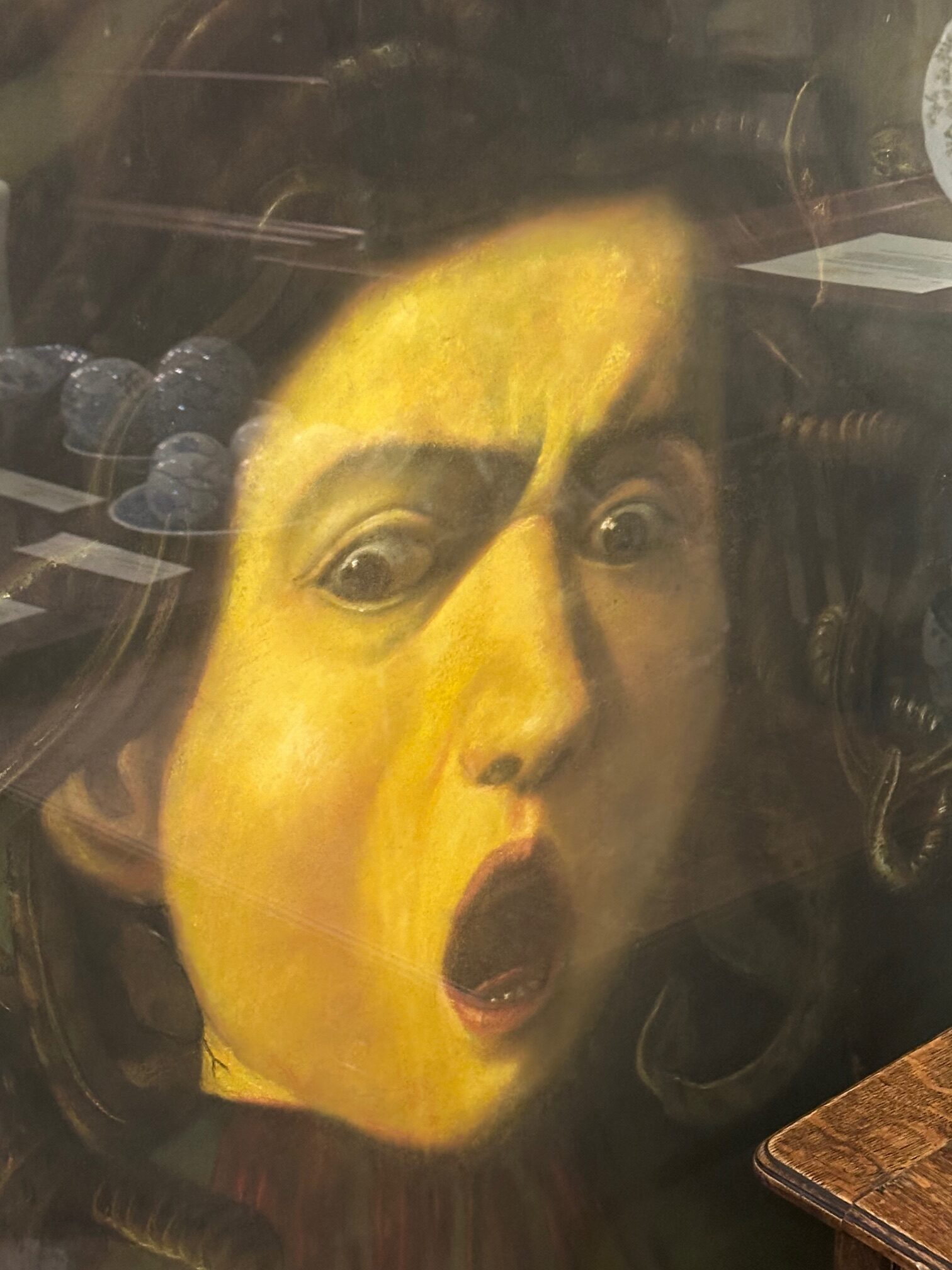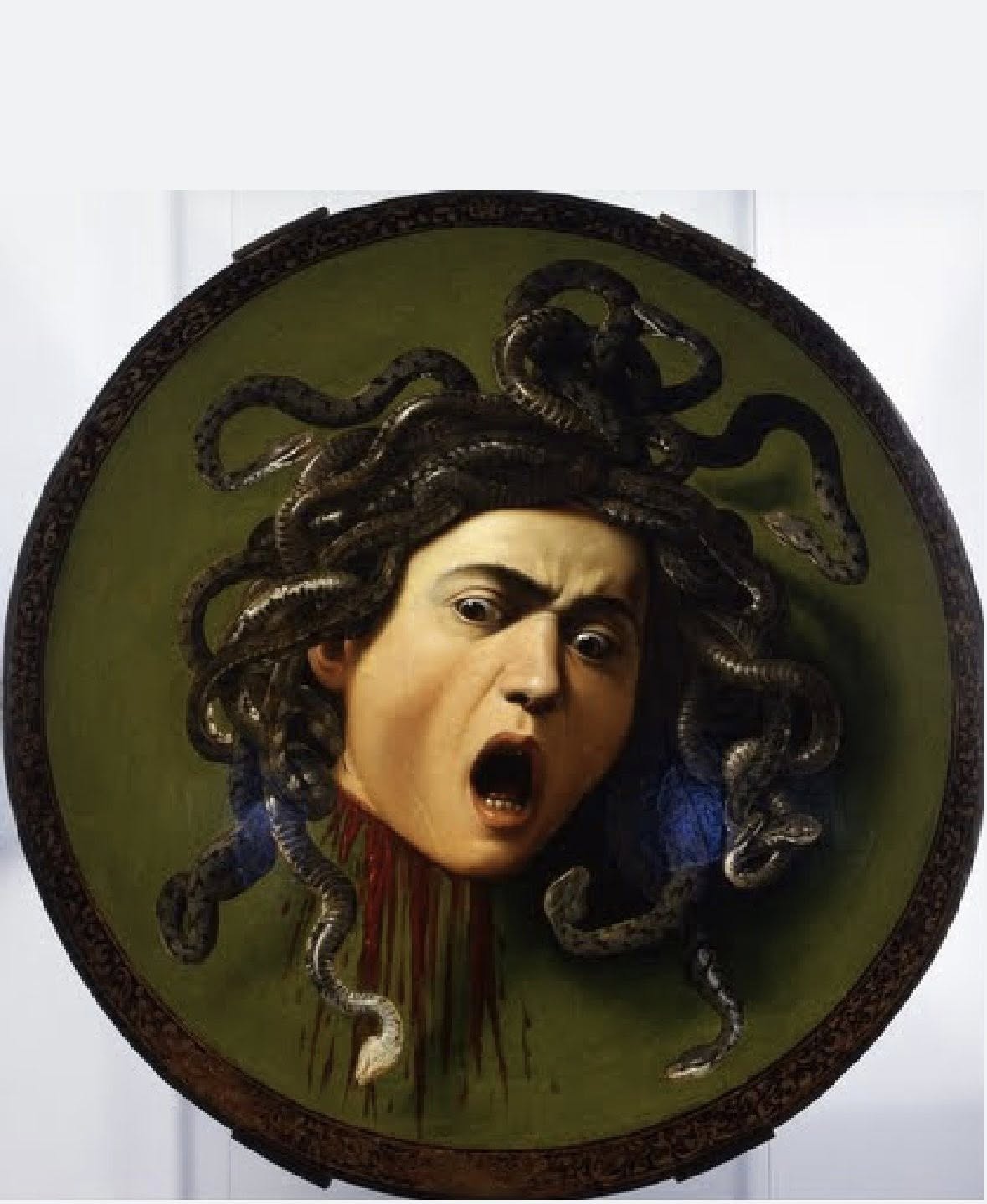Description
Caravaggio trained as a painter in Milan before moving to Rome when he was in his twenties. He developed a considerable name as an artist and as a violent, touchy and provocative man. He killed Ranuccio Tommasoni in a brawl, which led to a death sentence for murder and forced him to flee to Naples.
In 1598 Cardinal Francesco Maria del Monte gave this painted shield to the Grand Duke Ferdinando I. It was put in the Armory of the Uffizi without any attribution; in 1631 it was registered as a work by Caravaggio and was displayed as part of a suit of Persian Armor worn by a mannequin seated on a wooden horse. The Medusa is painted on canvas applied to a wooden shield. The subject is referring to the shield from Athena which was cunningly used to exploit the the Medusa’s power to petrify people. This iconography was often used by the Medici to represent their military power. Rather than use ancient sculpture for inspiration, the painter captures the expression on the Medusa’s face, deformed as it is in horror at having been beheaded while even the mane of serpents writhes in all directions; it is the passing moment between life and death.
Two versions of Medusa were created by Michelangelo Merisi da Caravaggio, one in 1596 and the other in ca. 1597. Both depict the moment from Greek mythology in which the Gorgon Medusa is killed by the demigod Perseus, but the Medusas are also self-portraits.
